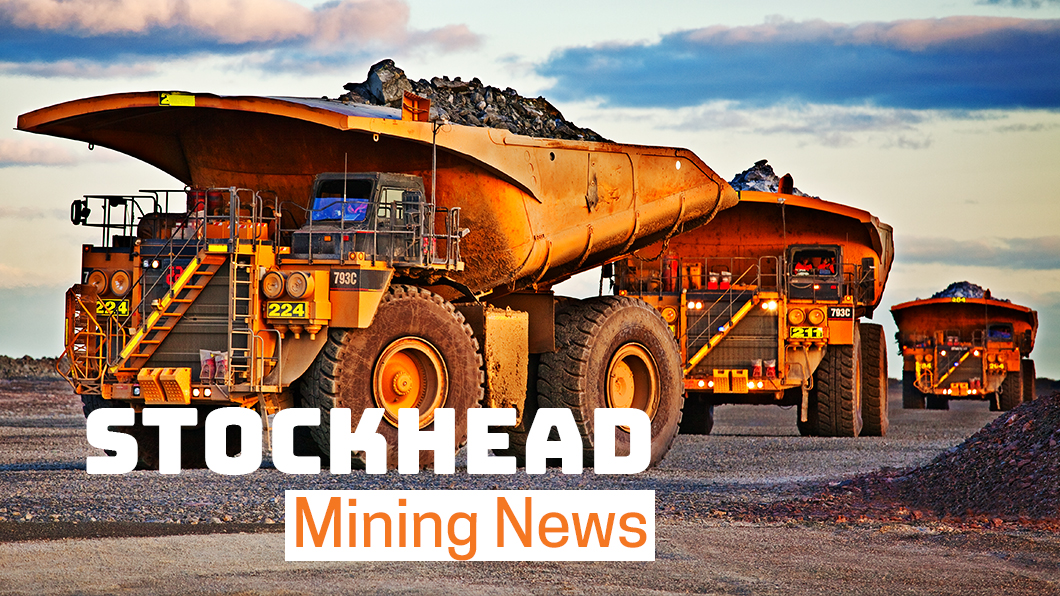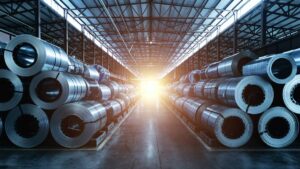Magnetite Mines builds Razorback momentum with PFS plan

Pic: John W Banagan / Stone via Getty Images
Magnetite Mines has released its long-awaited pre-feasibility study for its Razorback iron ore project in South Australia, as it marches towards a project DFS and a production target of 2024.
The highly-anticipated study by Magnetite (ASX:MGT) into its flagship project is ideally timed against a backdrop of strong demand and subsequent high prices for the steelmaking material, and the PFS economics do not disappoint.
The study confirms the opportunity to fast-track a high-return, long-life development of the large-scale resource at Razorback, using a staged approach to produce an attractive, high-grade concentrate.
Compared to many new iron ore projects which require significant expenditure from the outset, up-front capital intensity at Razorback is relatively low, enabled by the use of existing infrastructure in the South Australian locale which allows the company to fast-track to producer status.
In a climate where projects of similar scale can be hamstrung but a lack of access to funds, the ability to switch on production at a realistic cost point makes a significant difference to Magnetite’s ability to get up and running quickly and reliably – allowing for a production target of 2024.
The Razorback PFS outlines a project with an initial capital investment requirement of US$429-506 million, resulting in optimised case results including a net-present value of $669 million and a 20% internal rate of return against the selected go-forward case at long run average iron ore prices – one of a number of economic options explored by Magnetite. Current prices are almost double the level used to generate these results.
The case selected by Magnetite – known as the head grade improvement case (HGIC) – is based on higher mining rates than the PFS reference case, with a head grade upgrade from selective mining or ore sorting. It would produce 2.7 million tonnes per annum of high-grade concentrate over an initial mine life of 23 years.
An optimised three-stage 15.5Mtpa plant would be built to generate the concentrate, using three grinding and three magnetic separation and floatation stages to get output to a premium grade magnetite concentrate of 67.5-68.5% iron.
Reliable, low-cost power comes courtesy of connection to the Southeastern Australian electricity grid, which operates on a progressively renewable supply mix giving it a decreasing emissions profile.
In an investment climate where increasing focus is placed on a project’s environmental, social and corporate governance (ESG) principles, having access to an existing, reliable power source with a growing renewable presence is a significant advantage when it comes to funding.
The company won’t need to build its own power generation infrastructure, contributing to the low capex outlined in the PFS, while the grid’s use of renewables ties in with Magentite’s commitment to building a project and organisation with sustainability at its heart.
Existing transport networks would also be tapped.
Importantly once built, the project would continue to generate returns after all costs and sustaining capital to a trough price as low as $54/cost and freight tonne at a 62% iron basis.
That sort of price trough would generate significant returns for Magnetite shareholders against the current-day iron ore prices of +$US200.
Iron ore 62% fines prices have averaged US$98/t over the past decade, adjusted for US CPI to a real terms index of US$110.
Further to this, Magnetite’s intention to produce high grade concentrate is expected to receive a significant premium over the 62% fines price. Higher iron content is beneficial to steelmakers, and over the last year 65% fines product has sold at a US$19/t price premium to 62% fines. The same metric comes in at US$15/t over the past three years.
With MGT targeting high grade concentrate output in a range 67.5-68.5% iron, the realised price for this high grade product is expected to be higher still.
All options explored
The PFS once again highlights the rigorous and methodical work that the company has put into progressing its iron ore project and its massive potential over many years.
Magnetite technical director Mark Eames told Stockhead that for the PFS, the company looked carefully at its options for every stage of the project before settling on the HGIC.
“For the process plant, we looked at different scales while for the flowsheet, we looked at different grinding and separation technologies,” he noted.
“We did really detailed metallurgical sampling analysis to make sure we understood the resource well and we benchmarked costs against third parties.”

The go-forward case has a nominal mine life based on current ore reserves of over 20 years, with substantial potential to expand or extend this life through further resource conversion.
“This small-scale startup allows for a practical development of a long life, high quality business with a targeted date for first ore on ship at the end of 2024,” chief executive officer Peter Schubert noted in the PFS release.
PFS improvements
Eames said that the Magnetite team are firm believers in the benefits of selective mining and ore sorting and this is reflected in the decision to run with the HGIC.
“Increasing the head grade to the plant gives us more throughput for a similar footprint, leading to output increase and cost efficiencies in processing.” he said.
Hhighlighting the conservative nature of Magnetite’s estimates, Eames said that the company has taken the direct capital estimates from its world-class consultants and added 15% for the engineering and construction costs to get it built.
“We then put on an additional 23% to ensure we got the contingency right,” he said.

Razorback iron ore growth potential
While the numbers outlined in the go-forward case for Razorback represent a significant improvement over the scoping study assumptions, there is potential for further optimisation.
The numbers above are measured against an 62% fines iron ore price of US$110/t. But given the 62% iron ore fines price has averaged about US$184CFRt in the six months to the end of July, the company has also estimated post-tax NPV and IRR at $1,544m and 33% respectively using a higher, US$150CFR/t price.
Cashflow in this instance rises to $237 million per annum.
The project is also based on the current reserve of 472.7 million, or about 68.5Mt of 67.5% iron ore concentrate at a mass recovery of 14.5%, which represents just 31% of the overall indicated resource of 1.5 billion tonnes and 16% of the overall resource – a small slice of an enormous iron pie.
The existing mineral resource for Razorback does not feature any of the Muster Dam tenement package awarded to Magnetite by the South Australian Department for Energy and Mines in March.
That tenement, around 110km northeast of Razorback, has an inferred resource of 1.5 billion tonnes in its own right.
What this means is that with further evaluation, the company can easily convert more of its resources into reserves that could extend mine life or fuel expansions.
Plant scale in the study was also limited to ensure capital costs were kept to a manageable level, and mine life was capped at 30 years –which leaves considerable upside into the future.
This article was developed in collaboration with Magnetite Mines, a Stockhead advertiser at the time of publishing.
This article does not constitute financial product advice. You should consider obtaining independent advice before making any financial decisions.
Related Topics
UNLOCK INSIGHTS
Discover the untold stories of emerging ASX stocks.
Daily news and expert analysis, it's free to subscribe.
By proceeding, you confirm you understand that we handle personal information in accordance with our Privacy Policy.








